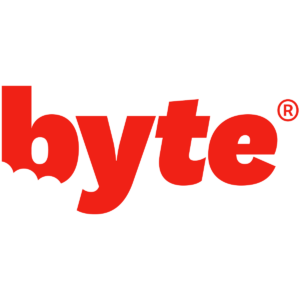Are you unsure of what to eat with braces on?
Nothing that is worthwhile is ever easy – exhibit A: braces. As soon as they are attached to your teeth, you will need to make drastic changes in your diet, oral hygiene, and even lifestyle. This is what makes the transformation of the braces treatment process worthwhile – the sacrifices, from the discomfort (or even pain) and the food you have to give up in order to better take care of your braces.
Guide to Eating with Braces
So what food should you avoid? Here’s a complete guide on what to eat with braces.
Metal braces indeed have come a long way since they were first used as orthodontic treatment. Earlier versions used alloy of nickel, copper, and titanium, along with ceramic. Newer versions today are now made with stainless steel, titanium, and molybdenum, along with porcelain. People can also choose designs and colors to make their braces look unique and appealing.
Despite these advancements and innovations in orthodontics, one thing remained certain in braces treatment, you have to take extra care of your braces. That includes avoiding certain food, especially chewy, gooey, and hard food that may get trapped between the wires and damage your braces. So what can you eat with braces?
What to expect
While it takes days or even a couple of weeks to adjust to the extra pressure on the teeth, that is not the hardest part of getting braces. If you ask anyone who has had braces, they would say the hardest part would be giving up on some food they love. The good news though is that your diet doesn’t have to be boring.
Pain and discomfort usually last one to three days after the braces are attached. Subsequently, you will experience discomfort after going to your family orthodontist adjustments of the braces, which could be every month or every three months. During these times, it is best to stick to eating only soft food, as they are easier to chew and won’t put extra pressure on your teeth.
What to eat with braces
Since you will also have to learn how to chew differently with your braces on, your orthodontist will recommend eating soft food for the first few days after your braces are attached. Here’s a quick list of foods you can eat when you first get your braces.
- bananas
- cooked or soft vegetables
- grains
- mashed potatoes
- moist desserts
- oatmeal
- pasta
- scrambled eggs
- seafood
- soft cheeses
- soft fruits
- soups
- yogurt
- peanut butter (go for creamy and avoid chunky ones)
Discomfort and gum sensitivity will improve after a few days. After which, you will be able to resume (somewhat) your usual diet.
What to avoid
As said earlier, despite their metal components, braces are still highly susceptible to damage. Thus, you will have to avoid certain food for as long as you are wearing braces. This includes hard and sticky foods that can get trapped between the bands and wires and cause damage.
It is also worth noting that your gum line might be subject to some soreness. This means that your options for food to eat will be limited right after the installation of braces.
Here’s a quick list of food to avoid when you have braces:
- bagels and other hard rolls
- chewing gum
- chewy candy
- chips
- crunchy vegetables
- hard fruit
- hard candy
- hard crackers
- ice cubes
- nuts
- pizza crust
- popcorn
- pretzels
- meat
- nuts grains
Foods to Minimize
Also, try to minimize your consumption of sweet food and beverages when you have braces. When mixed with saliva, sugar creates a sticky film (called plaque) that will coat your teeth. Bacteria inside your mouth love plaque and they can accelerate tooth decay. While brushing can remove plaque, it can be tricky to clean your teeth spotless with braces on. Thus, some of the plaque can get trapped in hard-to-reach areas and tight spaces.
Foods You Can Eat (Not Immediately After)
Also, there are some foods that are fine to eat with braces. However, they may not be ideal immediately after getting braces as they can irritate your gums and mouth and cause excessive pressure and sensitivity. This includes:
- citrus foods
- ice cream
- spicy foods
- thick cuts of meats
- thick rolls or bread
Don’t worry, you will be able to eat these foods after your teeth and gums adjust to having the braces.
Breakfast meal
The good thing about breakfast food is there are a wide variety of delicious and nutritious choices out there.
For your breakfast meal, you can have bread, mashed potatoes, and eggs; anything that is soft and easy to chew is good for your braces. Breakfast cereals, oatmeal, and soft toast are also good options, as they can be softened by milk. Pancake is also a breakfast food for you, along with French toast. Obviously, you have to stay away from bacon for now, as they can be tough to chew.
Yogurt is also a good option for breakfast, it’s delicious and nutritious. It’s packed with protein, calcium, and vitamins B6 and B12, along with a high amount of probiotics (good bacteria). Also, the cold temperature provides a soothing and numbing effect to your sore gums. Make sure you stick to low-fat yogurt though. Some yogurt in the market are sweetened, which means they have high levels of sugar that will not only jack up the carbs and cause havoc to your blood glucose level but more importantly, can cause tooth decay.
For side dish
There’s also a wide selection of side dishes you can eat as you wear your braces. Rice and pasta, mashed potatoes, and peas are all soft side dishes you can enjoy.
Mashed potatoes are extremely versatile; you can mix it with butter, cheese, or sour cream on top. You may need to avoid the skin though.
Sweet potatoes are a great option, especially if you are counting your carbs and calorie intake. You can enjoy them with butter or cheese.
For main dishes
For the main dish, you can never go wrong with soup in the first couple of days of getting braces. It’s well-known comfort food, easy and quick to make. They come in many varieties as well, whether it’s brothy or creamy; they are packed with vitamins and minerals.
Fish, ground chicken or turkeys, veggies, eggs, are all nutritious main dish choices too. Just make sure they are easy to chew. Fish, for example, is easy to cook, and whether you bake it, boil, or fry, they are soft and easy to chew.
Takeaway
Indeed, your first few days (or even a couple of weeks) will certainly be a challenge, but that doesn’t mean you have to starve. You can never go wrong with soft foods. If you are unsure, make sure you ask your orthodontist about the foods to eat during your first consultation. Ask for their recommendations to help you get over the hump of the first few weeks.
Note that, damaging your braces could definitely prolong your treatment. That means you will have to wear your braces for a longer duration than initially planned. So follow your orthodontist’s recommendation to the dot.
It is also important to keep up with your appointments with the dentist office. This will ensure that you can see results from wearing braces. If there is movement on your teeth, your dentist might recommend adjusting the fit of your braces. At the same time, you want to keep up with the recommended care for your teeth and braces to keep the wire and brackets in good condition. For instance, use a floss threader on your braces at least once a day to keep them clean.



